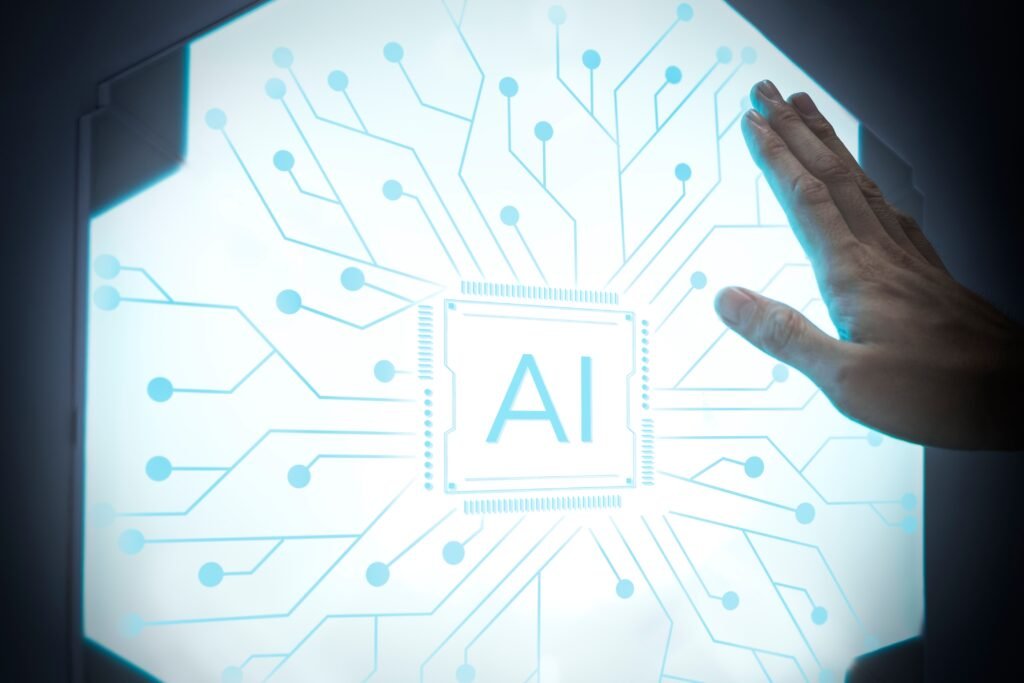Inside the Mind of Jensen Huang: How NVIDIA is Engineering the Future of Intelligence
The Cleo Abram Podcast with Jensen Huang’s | July 21, 2025
In today’s fast-moving digital landscape, the name NVIDIA has become synonymous with innovation, speed, and artificial intelligence. But behind its explosive growth lies the clear and confident vision of its CEO, Jensen Huang, who’s made a series of strategic bets over the past 30 years that have paid off in extraordinary ways. From building the first powerful graphics processing unit (GPU) to reshaping the entire concept of modern computing, Huang’s influence can be felt in nearly every aspect of today’s tech boom — from AI tools like ChatGPT and self-driving cars to advanced simulations in medical research and robotics.
This isn’t just a story about a tech company — it’s a blueprint for the future of intelligence. And perhaps more importantly, it’s a call to prepare ourselves for a future where machines are not only tools but partners in how we think, work, and create.

From Gaming Graphics to General Intelligence
Back in the 90s, video games were fun but visually crude. Developers had grand ideas for immersive 3D worlds, but they faced a hard limit: the CPU. These chips, designed for general-purpose tasks, simply couldn’t perform the complex mathematical operations needed to bring realistic graphics to life. NVIDIA’s breakthrough came from recognizing a key insight: most of the heavy lifting in graphics rendering — and later, in AI — could be done in parallel.
A GPU could break a large problem into many smaller parts and solve them simultaneously. This approach transformed computing speed and performance. And while video games were the first beneficiaries, the broader implication was that this new model — parallel computing — had the power to transform every industry.
“A GPU is like a time machine — it lets you see the future sooner.” – Jensen Huang
That future includes everything from smarter AI to virtual worlds, augmented reality, and scientific simulations.
Key Takeaway: Parallel computing is now the backbone of high-performance AI systems. From weather forecasts to cancer research, it’s the foundation that allows machines to process billions of variables in real-time — something traditional CPUs could never achieve alone.
CUDA: Giving Brains to GPUs
When researchers began repurposing GPUs to accelerate simulations and mathematical models, NVIDIA noticed a pattern. These scientists had to trick GPUs into thinking their complex math problems were graphics-related just to harness their processing power. This bottleneck led to the creation of CUDA, a revolutionary platform that allowed developers to program GPUs directly using familiar languages like C.
With CUDA, researchers across fields could suddenly unlock incredible processing capabilities. It was a radical, expensive, and risky move. But as Huang puts it:
“If you don’t build it, they can’t come.”
The breakthrough moment came in 2012 with AlexNet — an early deep-learning model trained on CUDA-powered GPUs. It crushed its competitors in a visual recognition competition and ignited the modern AI revolution. CUDA became the foundation of AI infrastructure, allowing even small teams with big ideas to experiment, train, and scale machine learning models.
Key Takeaway: CUDA democratized AI. Instead of AI being reserved for billion-dollar labs, it enabled independent researchers, startups, and students to build on the same computational power that once required a supercomputer. This laid the groundwork for today’s explosion in AI innovation — from transformer models to voice assistants and generative art.
CPU vs GPU - Parallel vs Sequential Computing
Feature | CPU | GPU |
Task Type | Sequential | Parallel |
Ideal For | General computing, logic | Graphics, simulations, AI |
Speed with Large Data | Slower due to step-by-step | Much faster, handles bulk |
Example | Spreadsheet calculations | Image recognition, video rendering |
Practical Tip: If you’re a data scientist, AI developer, or even a creative professional working in 3D, animation, or film — switching to a GPU-based workflow can improve your productivity by 10x or more. Today, cloud providers like AWS, Azure, and Google Cloud offer access to GPU computing, eliminating the need for expensive hardware at home.
The AI Feedback Loop: How AI Now Powers GPUs
A remarkable twist in this technological saga is how AI is now improving GPU performance — the very processors that enabled AI in the first place. NVIDIA’s latest RTX 50 Series GPU uses AI to perform a kind of intelligent guessing game. Instead of calculating every pixel in a 4K image, it processes just a fraction — around 500,000 pixels — and uses AI to fill in the remaining 7.5 million.
This technique, known as AI upscaling or DLSS (Deep Learning Super Sampling), delivers higher frame rates, lower power consumption, and astonishing image quality.
“Whatever resources you have, you can now focus on the most important pixels — AI will handle the rest.”
This is no longer just useful for gaming. It’s being adopted in digital filmmaking, virtual production, and architectural design, where real-time rendering was once impossible.
Key Takeaway: AI is optimizing the very tools that made it possible. This self-reinforcing cycle — where AI improves hardware, which enables better AI — is one of the most powerful trends in today’s computing landscape.
The Future is Robotic – And It’s Training in the Metaverse
One of the most fascinating visions Huang shared is the rise of robotics powered by AI simulations. Training robots in the real world is expensive, slow, and often dangerous. Enter NVIDIA Omniverse and Cosmos — platforms that simulate real-world physics in virtual environments.
These tools allow for the creation of “digital twins” — exact replicas of environments where robots can learn tasks like warehouse navigation, assembly-line work, or even driving in cities with traffic, weather, and human unpredictability. Training that once took months in physical space now takes days in simulation.
Real-Life Example: Amazon’s warehouse robots, autonomous vehicles, and even smart home systems can benefit. Companies can run thousands of hours of training data overnight, then deploy their systems in real life with confidence that they’ve already “seen” millions of scenarios.
How Omniverse + Cosmos Revolutionize Robotics Training
Training Method | Real World Only | Omniverse + Cosmos |
Speed of Learning | Slow (hours per trial) | Fast (millions/day) |
Safety Risk | High | None |
Cost | High | Low |
Environments Simulated | Limited | Infinite |
Example Application | Warehouse navigation | Smart buildings, drones |
Digital Biology: The Next Frontier
NVIDIA is also leading the charge in an area that’s rapidly gaining attention: digital biology. This involves creating computational models of living systems, from cells and proteins to entire organs. The implications are profound: faster drug discovery, personalized medicine, and predictive health modeling.
“Just as we understand the language of physics, we want to understand the language of the human body.”
Using AI to analyze massive datasets of genetic information and protein structures, scientists can now predict disease outcomes, identify new treatments, and simulate drug interactions — all without a single petri dish.
Key Takeaway: Healthcare and life sciences are on the verge of a data-driven revolution. NVIDIA’s platforms, including BioNeMo and Clara, are making it possible to simulate and understand biology like never before — cutting research timelines by years and saving billions in R&D costs.
Climate Science, Logistics, and Education: The AI Boom Begins
According to Huang, the next decade will be about applied AI. We’ve spent the last 10 years building foundational models. Now, it’s time to use them.
In climate science, AI will simulate regional weather patterns down to 1-kilometer accuracy, helping with disaster planning and agriculture. In education, personalized tutors will empower students worldwide. In logistics, autonomous delivery vehicles will route themselves in real time.
This isn’t hypothetical — it’s already happening.
“Everything that moves will be robotic — and it will be soon.”
From smart buildings to autonomous forklifts to robotic lawnmowers, the coming decade will see AI embedded into the very infrastructure of everyday life.
Prepare to be surrounded by intelligent agents. They’ll be in your home, your car, your workplace — even your phone. The key is to understand how to interact with them, guide them, and build alongside them.
Related Post



